Abstract
Hereditary haemorrhagic telangiectasia (HHT) or Osler-Weber-Rendu syndrome is an autosomal dominant vascular dysplasia characterised by recurrent haemorrhage. Our initial linkage studies found an HHT gene to be localised to 9q3 in two large kindreds. In the present study, we examine an additional five unrelated HHT families. Linkage analysis in this region resulted in a peak multipoint location score of 13.03, 10 cM proximal of D9S60. We found significant evidence for heterogeneity of HHT. Multipoint analysis supports the family specific two point studies with odds of 3,000,000:1 showing linkage and heterogeneity over linkage and homogeneity. Four of the seven families give a posterior probability of > 99% of being of the linked type, and three families appear unlinked to this region of 9q, and by multipoint analysis completely exclude the candidate region for HHT. Two new crossovers in affected persons in one of the linked families further define the proximal border of the candidate region on 9q3. A possible correlation in clinical phenotype between the 9q3 linked families and unlinked families is described. Although six of the seven families clearly meet the clinical criteria for HHT diagnosis, a significant absence of pulmonary arteriovenous malformations is seen in all three 9q3 unlinked families. Genetic heterogeneity of HHT and its potential correlation with a clinical phenotype may have a significant impact on the clinical management and treatment of HHT patients.
Full text
PDF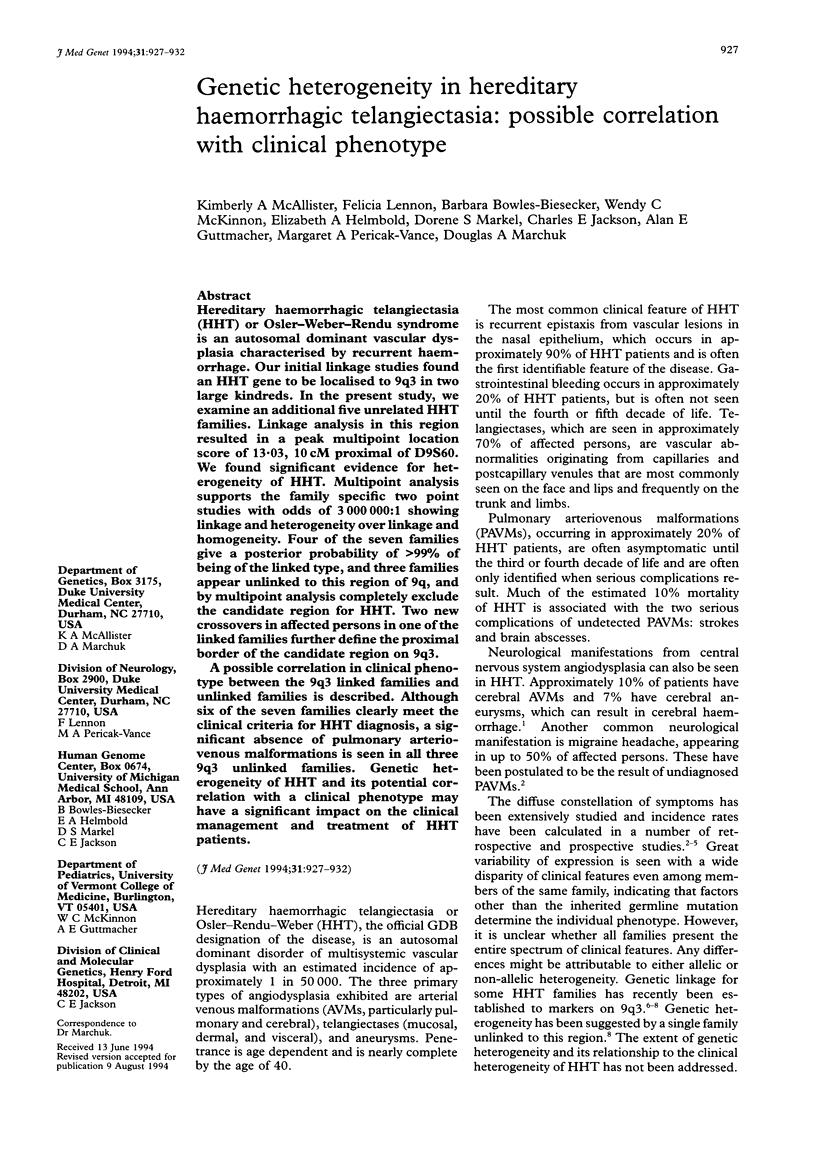
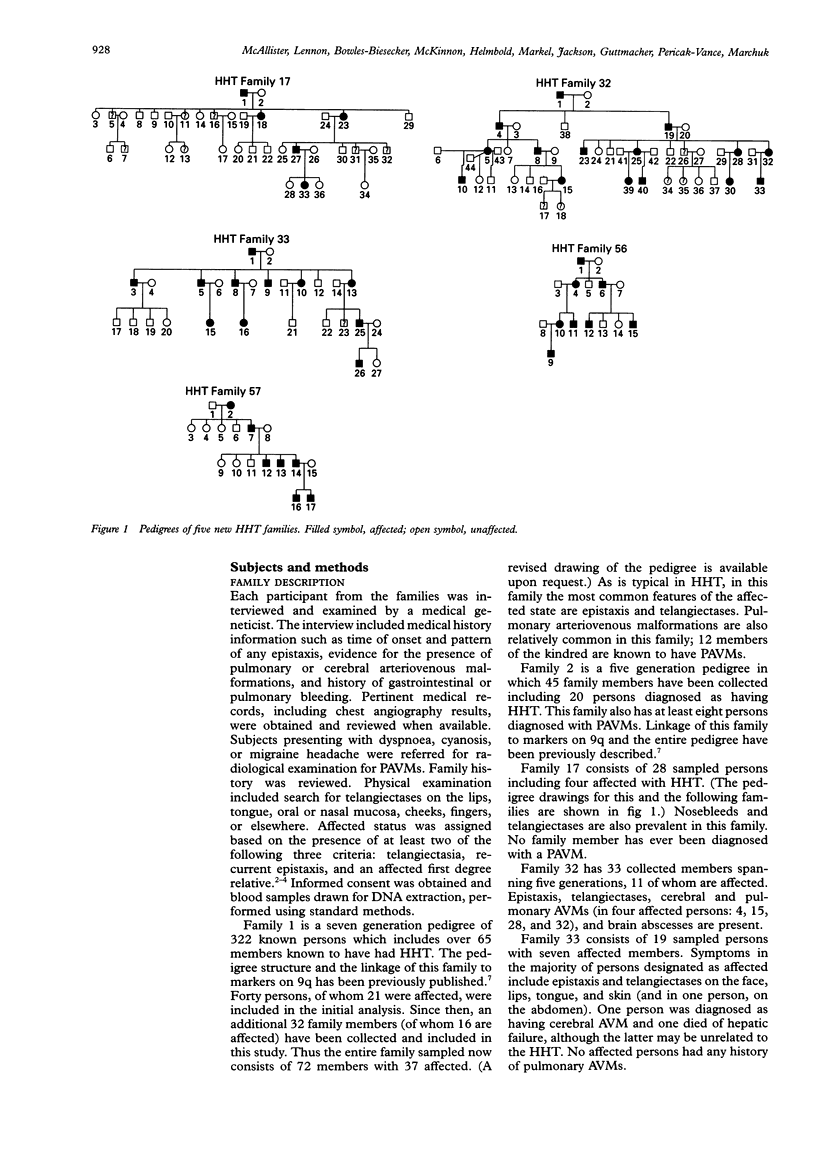
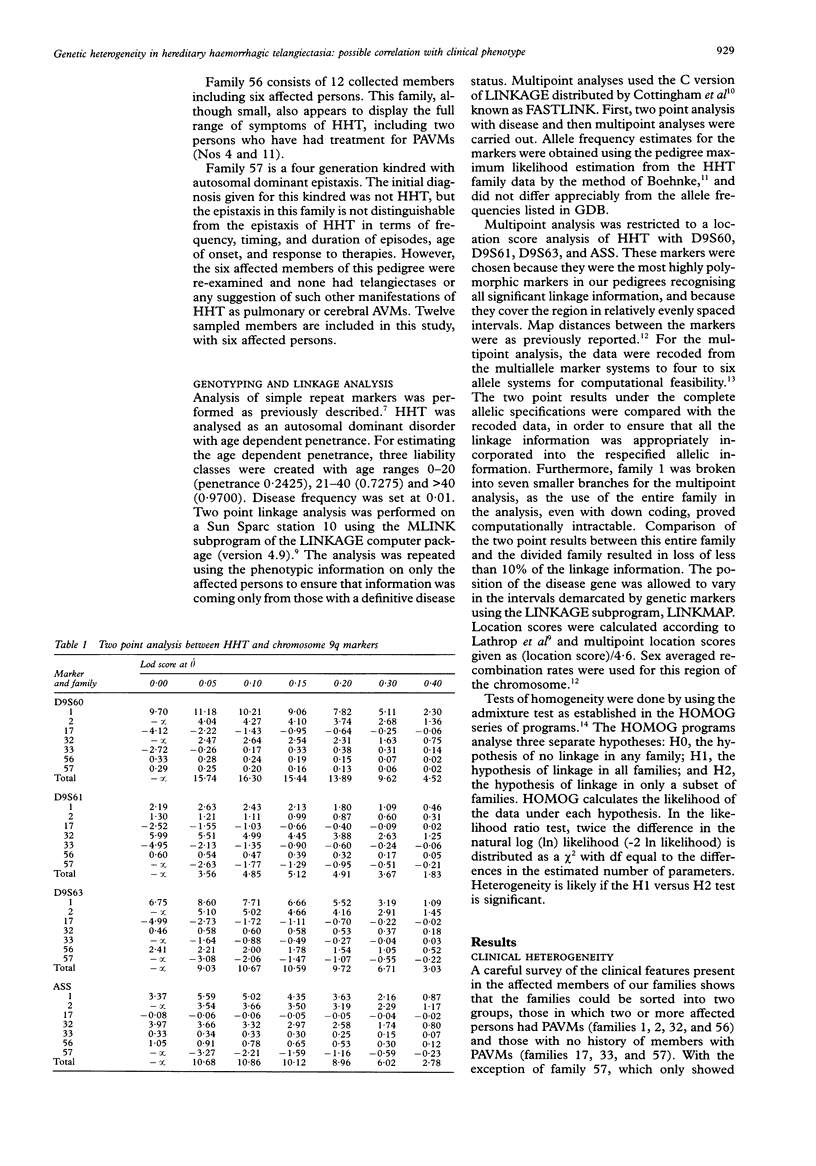
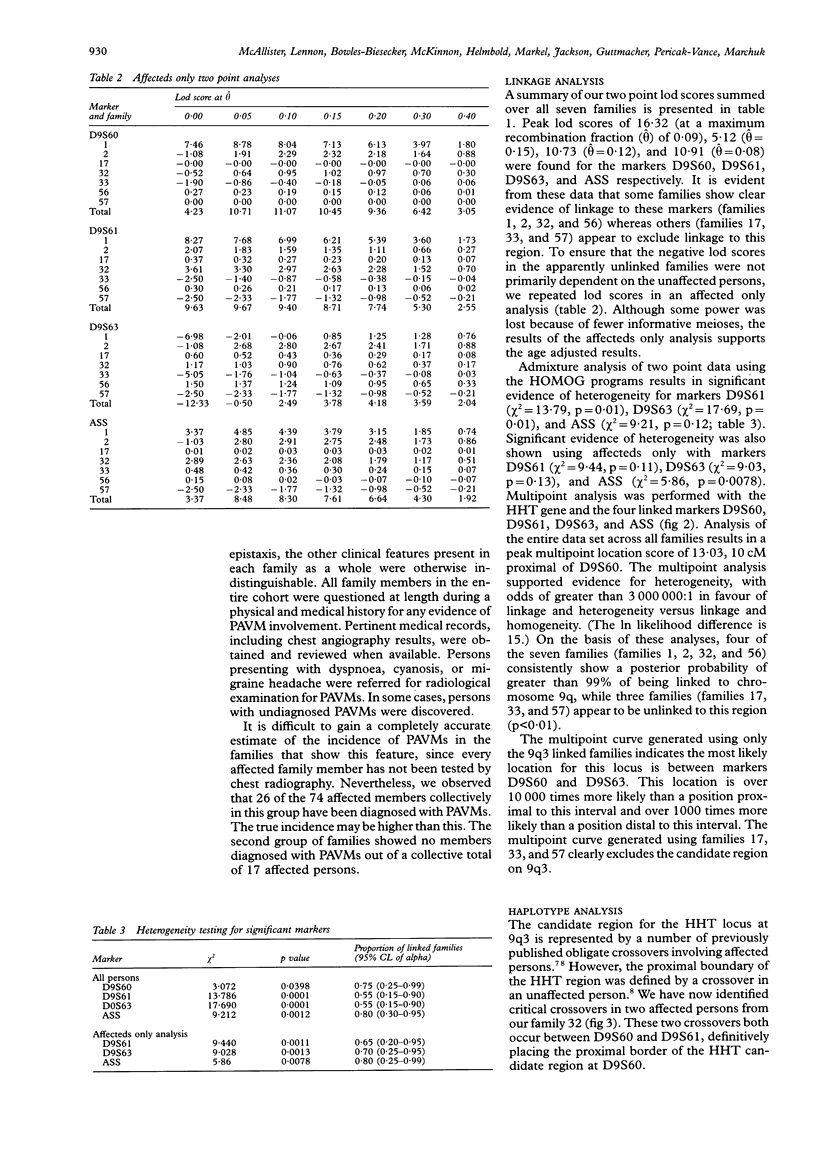
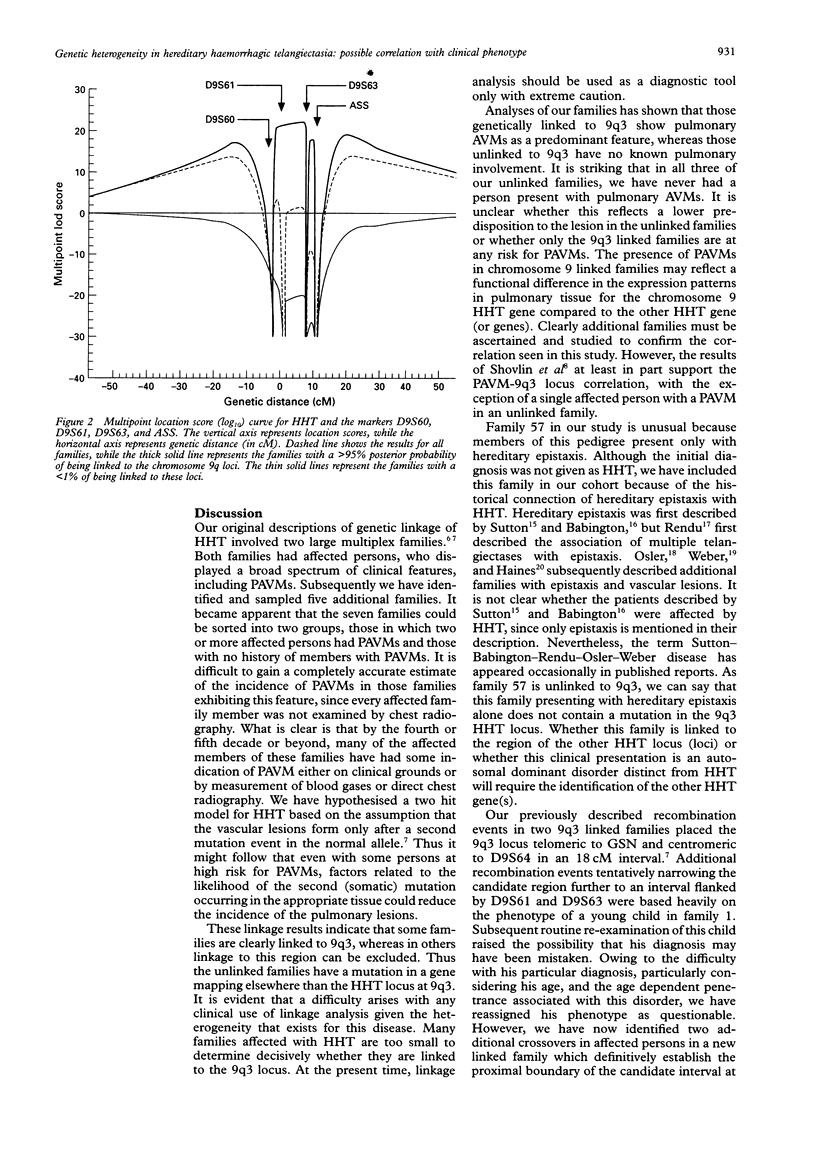
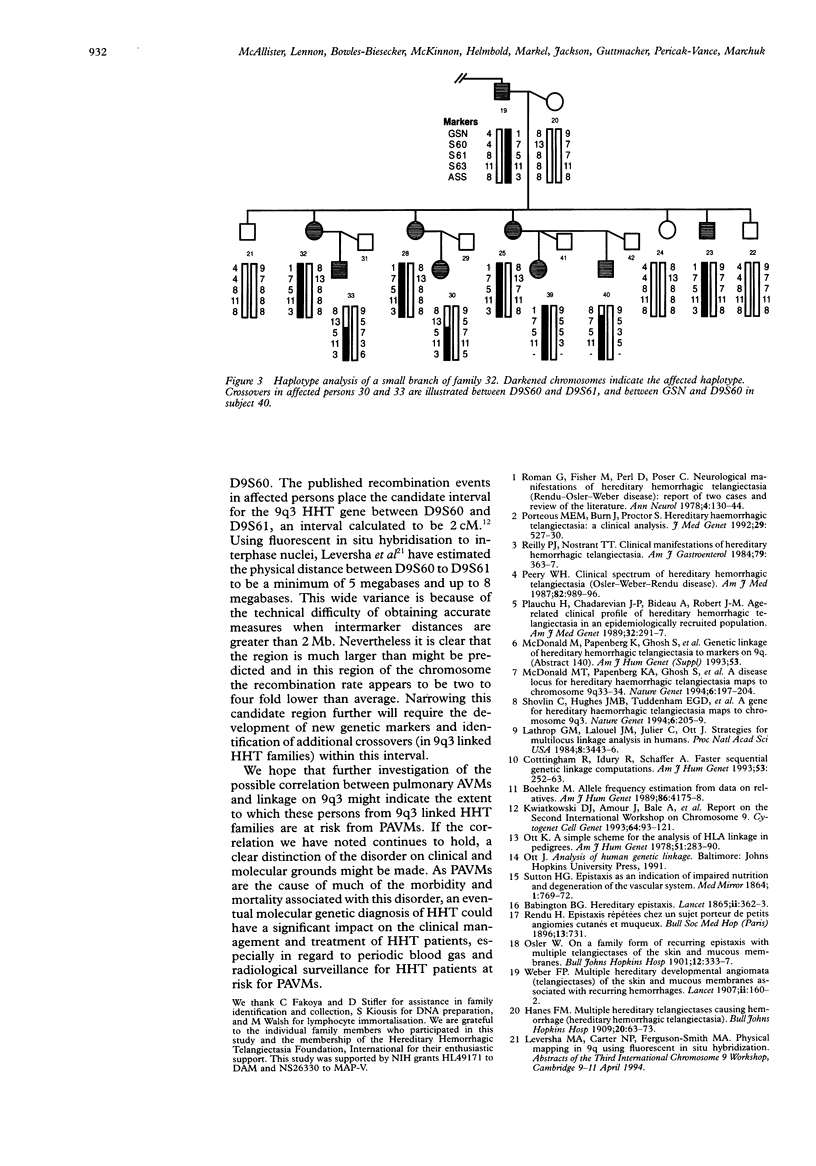
Selected References
These references are in PubMed. This may not be the complete list of references from this article.
- Cottingham R. W., Jr, Idury R. M., Schäffer A. A. Faster sequential genetic linkage computations. Am J Hum Genet. 1993 Jul;53(1):252–263. [PMC free article] [PubMed] [Google Scholar]
- Kwiatkowski D. J., Armour J., Bale A. E., Fountain J. W., Goudie D., Haines J. L., Knowles M. A., Pilz A., Slaugenhaupt S., Povey S. Report and abstracts of the Second International Workshop on Human Chromosome 9 Mapping 1993. Cytogenet Cell Genet. 1993;64(2):93–121. doi: 10.1159/000133566. [DOI] [PubMed] [Google Scholar]
- Lathrop G. M., Lalouel J. M., Julier C., Ott J. Strategies for multilocus linkage analysis in humans. Proc Natl Acad Sci U S A. 1984 Jun;81(11):3443–3446. doi: 10.1073/pnas.81.11.3443. [DOI] [PMC free article] [PubMed] [Google Scholar]
- McDonald M. T., Papenberg K. A., Ghosh S., Glatfelter A. A., Biesecker B. B., Helmbold E. A., Markel D. S., Zolotor A., McKinnon W. C., Vanderstoep J. L. A disease locus for hereditary haemorrhagic telangiectasia maps to chromosome 9q33-34. Nat Genet. 1994 Feb;6(2):197–204. doi: 10.1038/ng0294-197. [DOI] [PubMed] [Google Scholar]
- Peery W. H. Clinical spectrum of hereditary hemorrhagic telangiectasia (Osler-Weber-Rendu disease). Am J Med. 1987 May;82(5):989–997. doi: 10.1016/0002-9343(87)90162-8. [DOI] [PubMed] [Google Scholar]
- Plauchu H., de Chadarévian J. P., Bideau A., Robert J. M. Age-related clinical profile of hereditary hemorrhagic telangiectasia in an epidemiologically recruited population. Am J Med Genet. 1989 Mar;32(3):291–297. doi: 10.1002/ajmg.1320320302. [DOI] [PubMed] [Google Scholar]
- Porteous M. E., Burn J., Proctor S. J. Hereditary haemorrhagic telangiectasia: a clinical analysis. J Med Genet. 1992 Aug;29(8):527–530. doi: 10.1136/jmg.29.8.527. [DOI] [PMC free article] [PubMed] [Google Scholar]
- Reilly P. J., Nostrant T. T. Clinical manifestations of hereditary hemorrhagic telangiectasia. Am J Gastroenterol. 1984 May;79(5):363–367. [PubMed] [Google Scholar]
- Román G., Fisher M., Perl D. P., Poser C. M. Neurological manifestations of hereditary hemorrhagic telangiectasia (Rendu-Osler-Weber disease): report of 2 cases and review of the literature. Ann Neurol. 1978 Aug;4(2):130–144. doi: 10.1002/ana.410040207. [DOI] [PubMed] [Google Scholar]
- Shovlin C. L., Hughes J. M., Tuddenham E. G., Temperley I., Perembelon Y. F., Scott J., Seidman C. E., Seidman J. G. A gene for hereditary haemorrhagic telangiectasia maps to chromosome 9q3. Nat Genet. 1994 Feb;6(2):205–209. doi: 10.1038/ng0294-205. [DOI] [PubMed] [Google Scholar]


